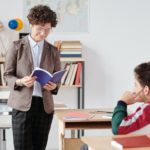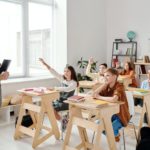Blended learning is – by definition – about the mix of digital and physical classroom. But sometimes it can be tempting to focus a little too much on the digital aspect.
After all, that’s where all the innovation is, with the constant creation of new technologies and techniques exciting and inspiring students and teachers alike.
But ultimately a good blended learning solution is one that never loses sight of the balance between digital and traditional. In this week’s blog we look at three key ways the two should interact.
First, be clear about the strengths and ‘weaknesses’ of both
The physical classroom:
- Enables you to see how individual students and the group are progressing and interacting, instantly. This means you can respond directly, and even change things on the go.
- Helps nurture students’ ‘soft’ skills, such as interpersonal relationships, speaking in front of a group, and collaborating.
- Can also be a noisy environment that hinders students’ behavior and concentration.
- Relies – to an extent – on a common pace of learning. This can take students at either end of the spectrum (fast or slow) out of their ideal path.
The digital classroom:
- Gives you a chance to extend learning long after the class has finished.
- Allows you to add more depth to a topic, so students can not only review what they learnt in class, but also reinforce and enrich their understanding.
- Is a way to test and probe students via polls and online discussions, and give on-going feedback.
- Allows a student to carry out one-to-one conversations with a teacher that they might be reluctant to do in class (or that, quite simply, there might not be time for).
Secondly, think of the two as a continuous flow
Most blended classroom advice looks at using the digital space to reinforce and develop what’s been introduced in classroom learning – as mentioned above.
But the digital classroom can also be used ahead of physical classroom learning, in preparation and as a ‘preview’. In this way, you can raise your students’ interest in a subject before teaching it. Similarly, you can also assess how much students already know about a subject, enabling you to tailor your teaching to the right level from day one.
This ‘continuous flow’ means that the two worlds are truly working together, rather than one after the other, making for a much more beneficial approach.
Thirdly, don’t stick to rigid separation
It doesn’t need to be the case that all the techniques you use in the digital classroom – video and audio content, online research and so on – then never appear in the physical classroom.
Blended learning can and should be about seamless experiences, so don’t feel you have to stick to rigid demarcations of techniques. Play a movie in the physical classroom; allow groups to work online there as well as in their own time – as the word ‘blended’ implies, it’s all about how you mix it up!


